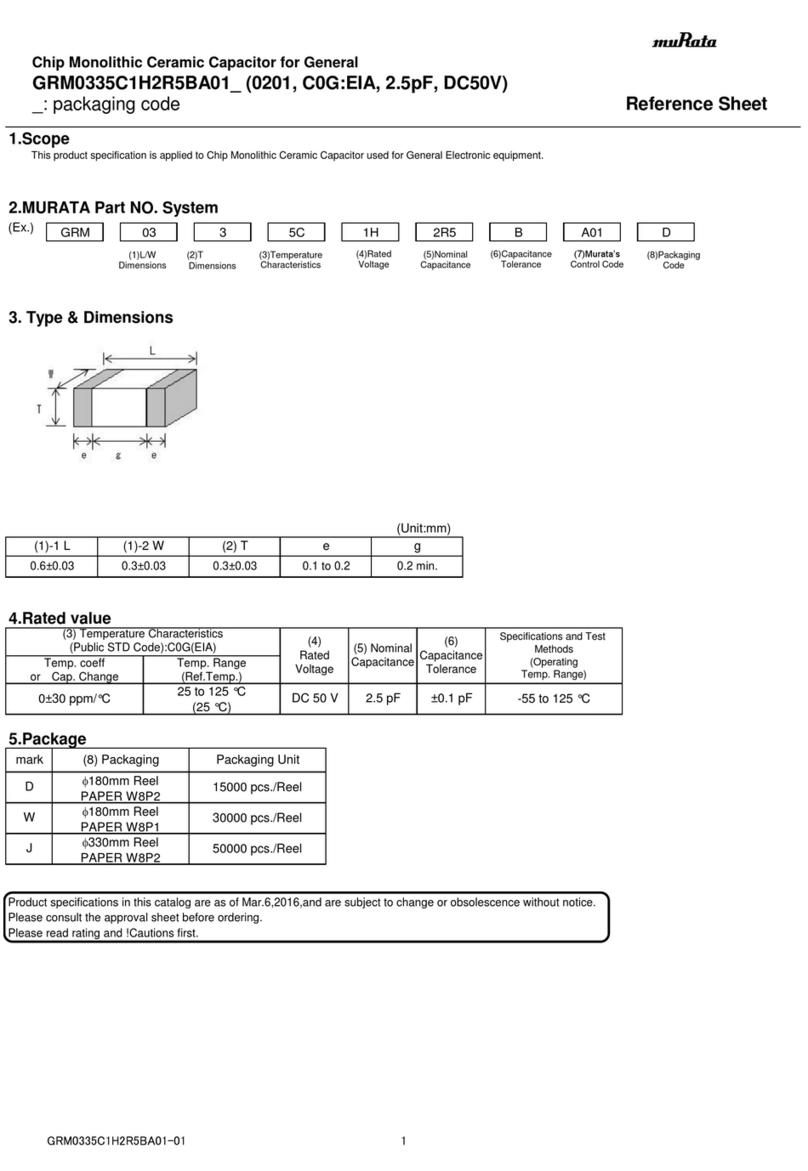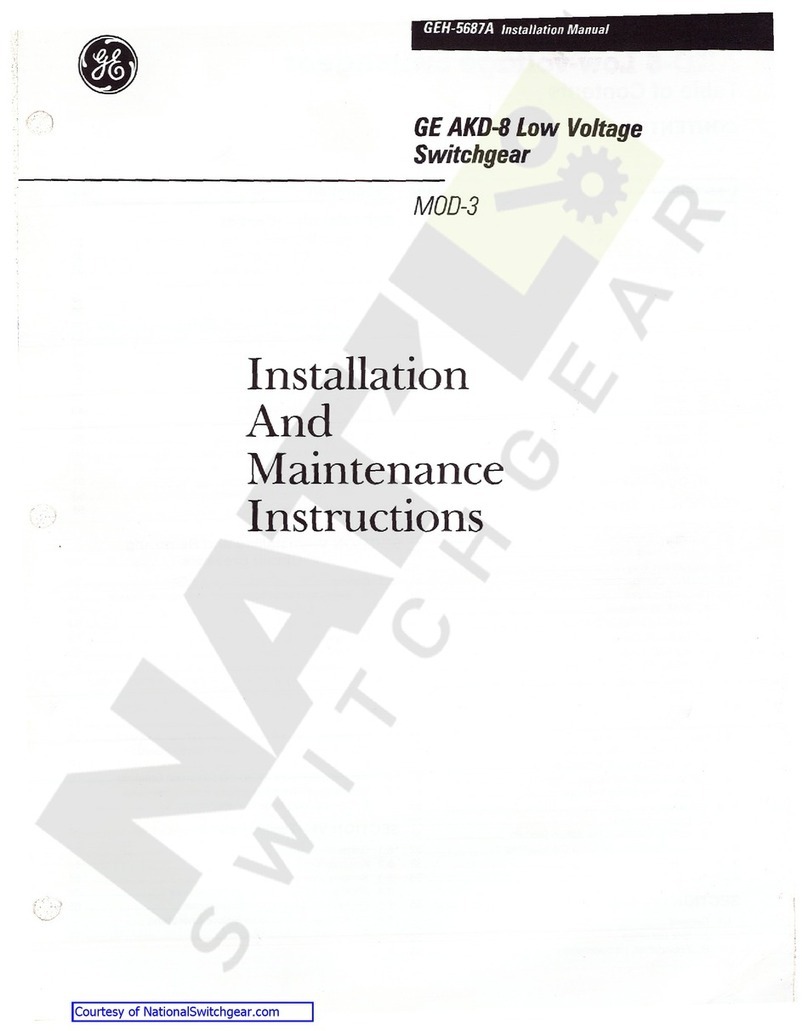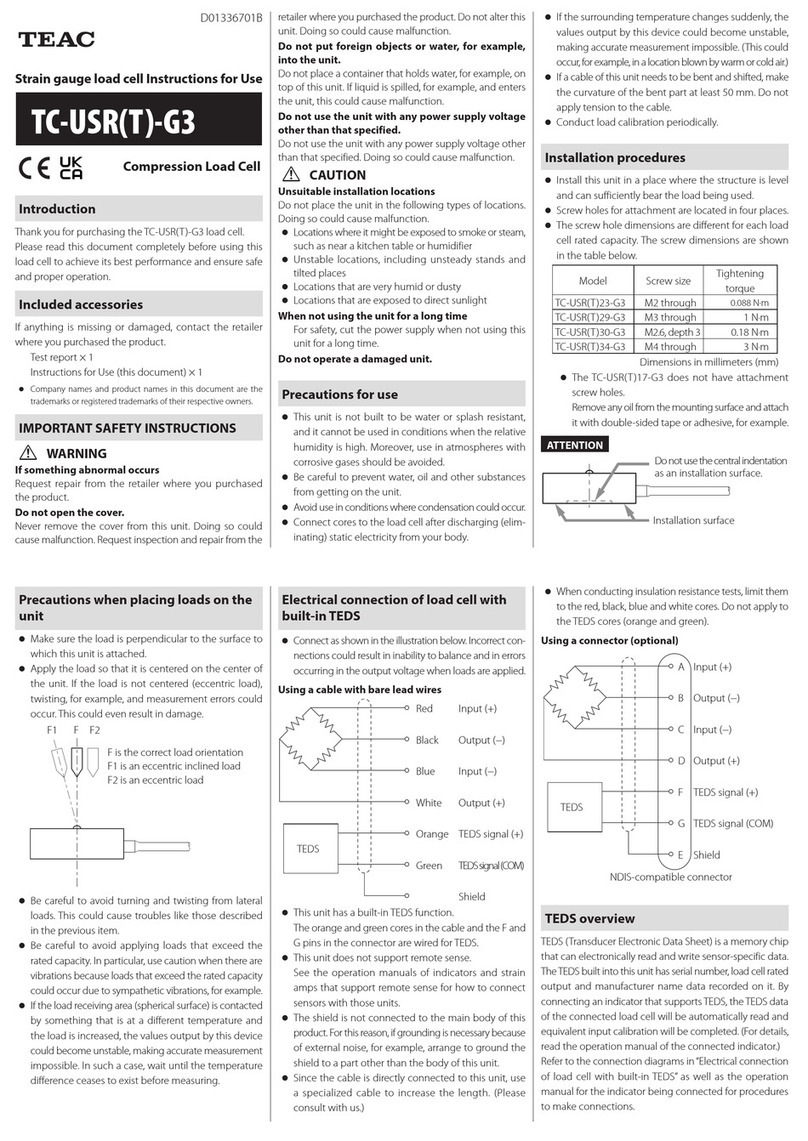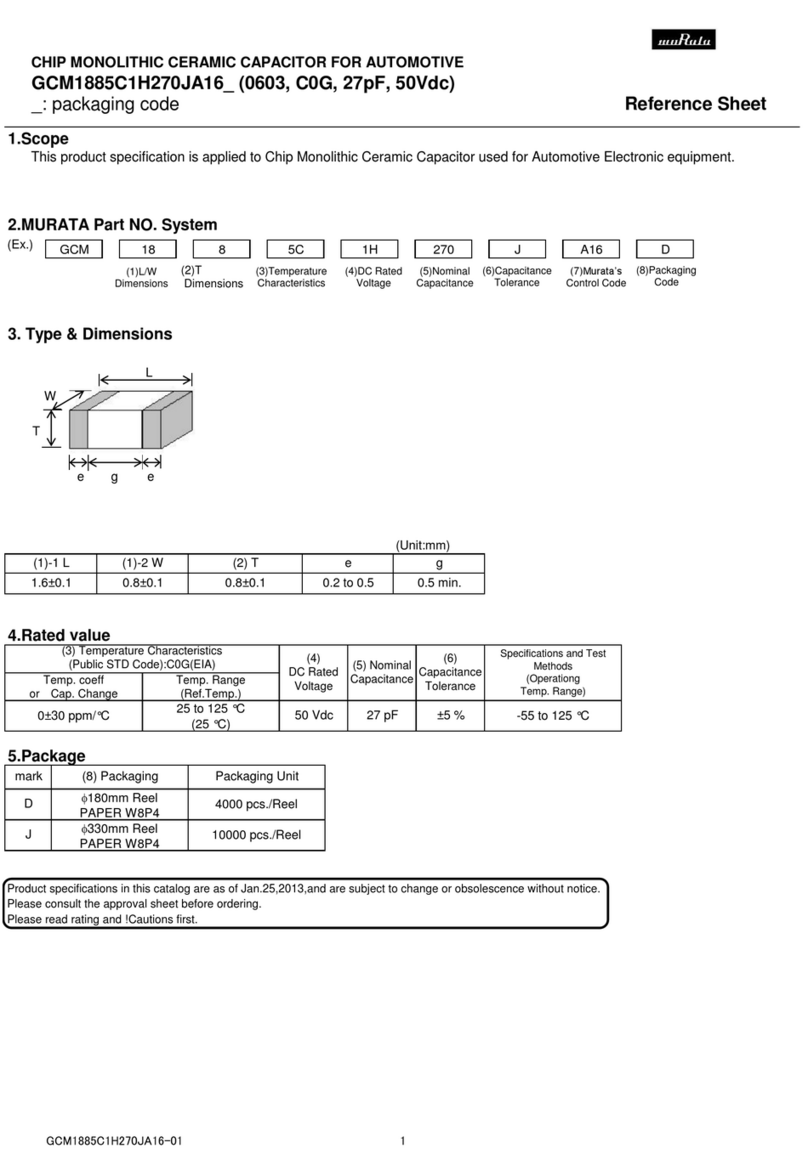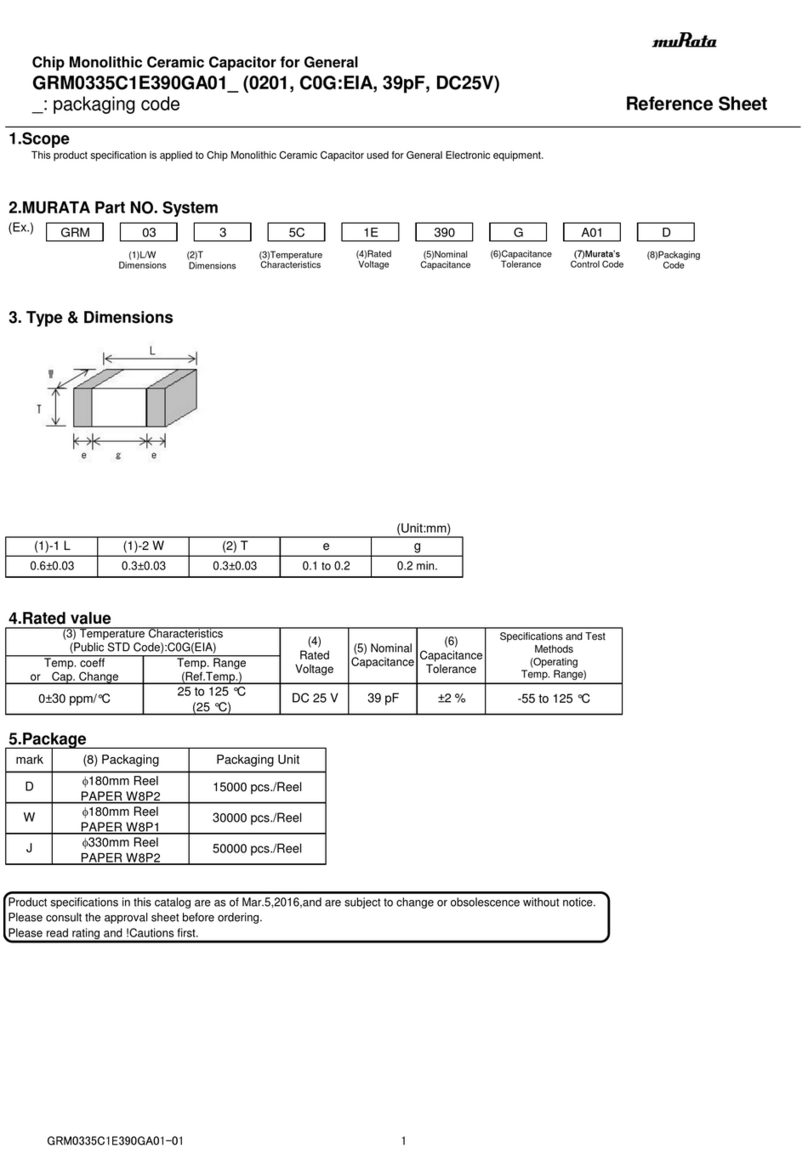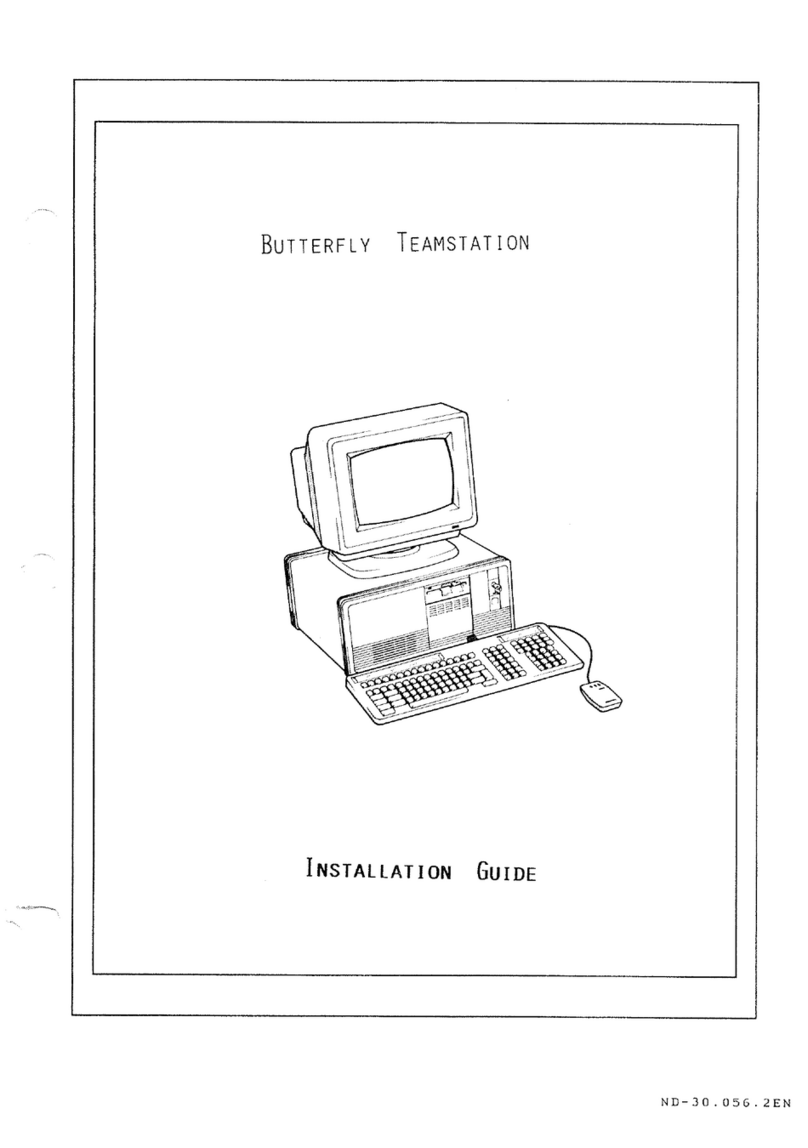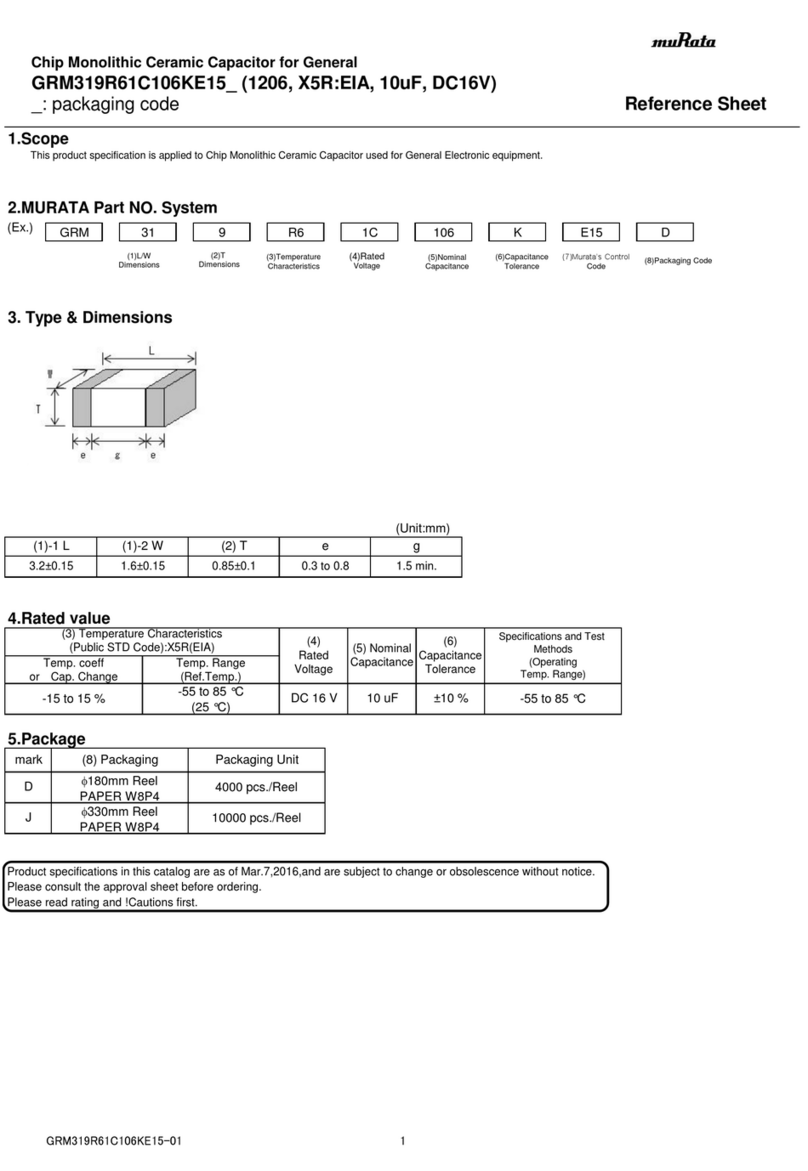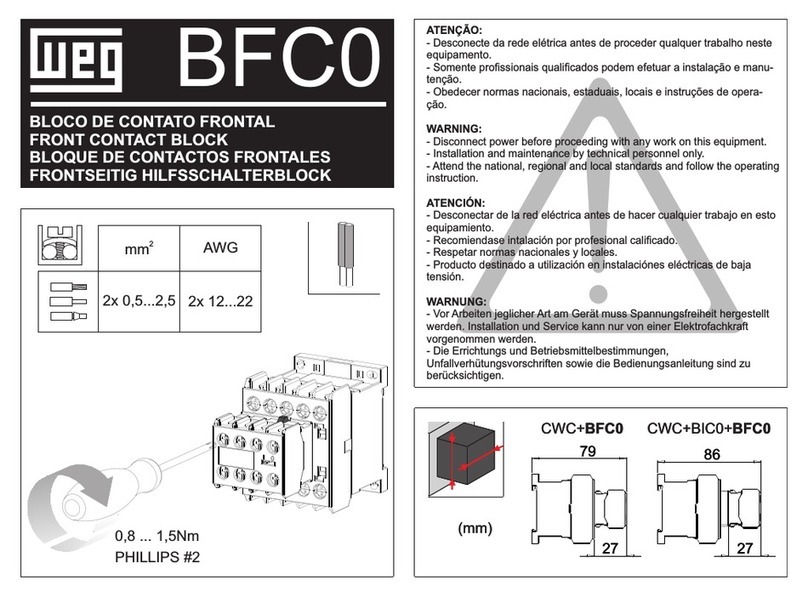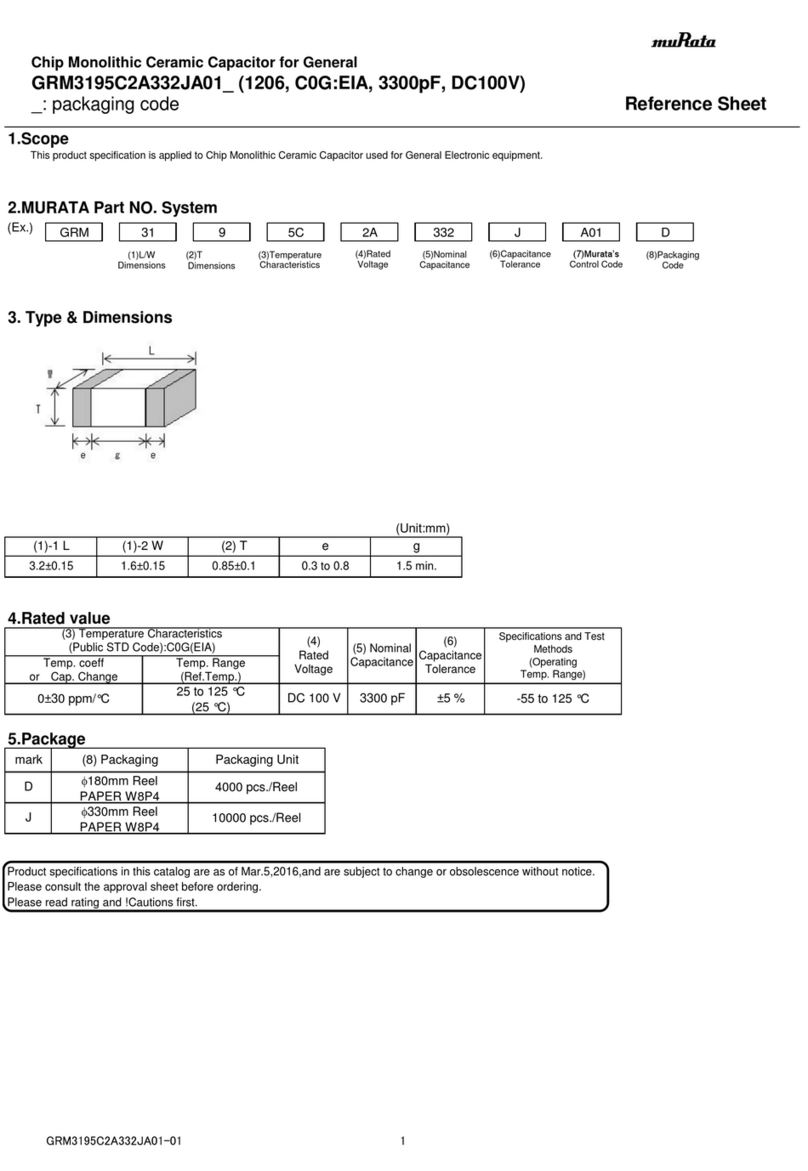RITZ SIS BUS BAR SYSTEMS User manual

INSTALLATION INSTRUCTIONS
SIS BUS BAR SYSTEMS
GERMANY
HAMBURG • WIRGES • KIRCHAICH • DRESDEN
AUSTRIA
MARCHTRENK |
HUNGARY
KECSKEMÉT |
CHINA
SHANGHAI |
USA
HARTWELL

Installation Instructions for SIS Bus Bar Systems A2MS001EN revision R05
2 / 130
READ THE INSTRUCTIONS PRIOR
TO PERFORMING ANY TASK!
RITZ Instrument Transformers GmbH
Mühlberg 1
97514 Oberaurach-Kirchaich
Germany
Telephone: +49 9549 89-0
Fax: +49 9549 89-11
E-Mail: sis-service@ritz-international.com
Internet: www.ritz-international.com
Checked by: Wolfgang Wessing
Approved by: Stefan Waldheuser
Ritz documentation designation: A2MS001EN
Supersedes RITZ document SA8520-001
©RITZ Instrument Transformers GmbH 2015 - 2020

Installation Instructions for SIS Bus Bar Systems A2MS001EN revision R05
3 / 130
INFORMATIONS ON INSTALLATION
INSTRUCTIONS
These instructions, together with the project
documentation (see other valid documents),
enable you to install the bus bars correctly.
The figures contained in these installation
instructions are for illustration purposes. You
must refer to the project documentation (see
other valid documents) for the actual design.
Staff must carefully read through and understand
these instructions before starting any work.
Adherence to all the safety information and
instructions specified in these instructions is a basic
requirement to ensure safety whilst working.
COPYRIGHT
The local occupational health and safety regulations
and general safety rules for the installation of bus
bars also apply.
The contents of these instructions are protected by
copyright. They may be used within the scope of
installation of the SIS bus bar system. Any other form
of use going beyond this is not permitted without
written permission from RITZ Instrument
Transformers GmbH.
CUSTOMER SERVICE ( KIRCHAICH SITE )
Telephone number: +49 9549 89-0

Installation Instructions for SIS Bus Bar Systems A2MS001EN revision R05
4 / 130
TABLE OF CONTENTS
1THE SIS BUS BAR SYSTEM.............................................................................................................7
1.1 SHORT DESCRIPTION......................................................................................................................7
1.2 OTHER APPLICABLE DOCUMENTS................................................................................................9
1.3 SCOPE OF DELIVERY ......................................................................................................................9
1.4 MEANS OF LABOUR AND TOOLS .................................................................................................10
1.5 TORQUE VALUES...........................................................................................................................10
1.6 RATING PLATE................................................................................................................................10
2SAFETY............................................................................................................................................11
2.1 SYMBOLS.........................................................................................................................................11
2.2 PROPER USE ..................................................................................................................................12
2.3 RESIDUAL RISKS............................................................................................................................13
2.3.1 BASIC HAZARDS WHEN PERFORMING INSTALLATION ............................................................13
2.3.2 ELECTRICITY HAZARDS................................................................................................................17
2.3.3 HAZARDS FROM SUBSTANCES AND CONSUMABLES..............................................................18
2.3.4 RISK OF MATERIAL DAMAGE........................................................................................................19
2.4 RESPONSIBILITY OF THE OWNER...............................................................................................20
2.5 STAFF REQUIREMENTS ................................................................................................................22
2.6 PERSONAL SAFETY CLOTHING AND EQUIPMENT ....................................................................23
2.7 ENVIRONMENTAL PROTECTION..................................................................................................25
3TRANSPORTATION AND STORAGE ............................................................................................27
3.1 SAFETY INSTRUCTIONS ON TRANSPORTATION AND STORAGE ...........................................27
3.2 SYMBOLS ON THE PACKAGING ...................................................................................................28
3.3 TYPE OF DELIVERY........................................................................................................................29
3.4 TRANSPORT INSPECTION.............................................................................................................29
3.5 TRANSPORTATION OF PACKAGES..............................................................................................30
3.6 PACKAGING ....................................................................................................................................31
3.7 UNPACKING.....................................................................................................................................32
3.8 STORAGE ........................................................................................................................................33
3.9 TRANSPORTATION TO THE INSTALLATION LOCATION............................................................34
4INSTALLATION ...............................................................................................................................35
4.1 SAFETY INSTRUCTIONS ON INSTALLATION...............................................................................35
4.2 PREREQUISITES FOR INSTALLATION.........................................................................................39
4.3 PROTECTION FROM CLIMATIC INFLUENCES.............................................................................40
4.4 INSTALLING FIXATION UNITS .......................................................................................................40
4.5 INSTALLING BUS BARS..................................................................................................................45
4.5.1 SPACING BETWEEN BAR ELEMENTS..........................................................................................45

Installation Instructions for SIS Bus Bar Systems A2MS001EN revision R05
5 / 130
4.5.2 TIGHTENING TORQUE VALUES....................................................................................................46
4.5.3 FASTENING BUS BAR ELEMENTS................................................................................................46
4.5.4 SETTING FIXED BEARINGS...........................................................................................................47
4.5.5SETTING SLIDING BEARINGS.......................................................................................................47
4.6 PREPARING THE EARTHING CABLES .........................................................................................47
4.7 INSTALLING CONNECTION SLEEVES..........................................................................................50
4.7.1 INSTALLING INDOOR CONNECTION SLEEVES...........................................................................50
4.7.1.1 PREPARING INDOOR CONNECTION SLEEVES ..........................................................................50
4.7.1.1.1 PREPARATION ON BOTH SIDES...................................................................................................50
4.7.1.1.2 PREPARING THE CONNECTION SLEEVE....................................................................................52
4.7.1.2 ESTABLISHING THE ELECTRICAL CONNECTION.......................................................................54
4.7.1.2.1 INSTALLING FLEXIBLE CONNECTORS AND CONTACT SPRINGS: ALUMINIUM-COPPER.....54
4.7.1.2.2 INSTALLING FLEXIBLE CONNECTORS AND CONTACT SPRINGS: COPPER-COPPER..........64
4.7.1.2.3 INSTALLING FLEXIBLE CONNECTORS AND CONTACT SPRINGS: OTHERS...........................68
4.7.1.2.4 TIGHTENING THE TORQUING.......................................................................................................69
4.7.1.2.5 MARKING THE BOLTED CONNECTIONS......................................................................................70
4.7.1.2.6 CLEANING THE CONTROLLED SYSTEMS...................................................................................70
4.7.1.3 CLOSING INDOOR CONNECTION SLEEVES ...............................................................................72
4.7.1.3.1 ALIGNING THE CONNECTION SLEEVE PIPE...............................................................................72
4.7.1.3.2 SCREWING THE SEALING FLANGE IN PLACE............................................................................73
4.7.1.3.3 EARTHING THE INDOOR CONNECTION SLEEVE.......................................................................74
4.7.2 INSTALLING OUTDOOR CONNECTION SLEEVES ......................................................................75
4.7.2.1 PREPARING OUTDOOR CONNECTION SLEEVES ......................................................................75
4.7.2.1.1 PREPARING THE BELLOWS..........................................................................................................75
4.7.2.1.2 PREPARATION ON BOTH SIDES...................................................................................................78
4.7.2.1.3 PREPARING THE CONNECTION SLEEVE PIPE...........................................................................80
4.7.2.2 ESTABLISHING THE ELECTRICAL CONNECTION.......................................................................81
4.7.2.3 ALIGNING THE CONNECTION SLEEVE PIPE...............................................................................82
4.7.2.4 EARTHING THE OUTDOOR CONNECTION SLEEVE...................................................................83
4.7.2.5 CLOSING THE CONNECTION SLEEVE AND BELLOWS ON BOTH SIDES ................................84
4.8 SETTING UP ELECTRICAL CONNECTIONS ON SWITCHGEARS OR TRANSFORMERS.........86
4.8.1 BUS CONNECTION.........................................................................................................................86
4.8.2 INSTALLATION WITH AL ELAST CONTACT DISCS .....................................................................86
4.8.3 INSTALLATION WITH CONICAL SPRING WASHER.....................................................................87
4.9 EARTHING THE BUS BAR SYSTEM ..............................................................................................88
4.9.1 WHEN EARTHING VIA EARTHING NUT APPLIES........................................................................89
4.9.2 WHEN EARTHING VIA EARTHING NUT DOES NOT APPLY........................................................91
4.9.2.1 REGARDING INDOOR BUS BAR SYSTEMS .................................................................................91
4.9.2.2 REGARDING OUTDOOR BUS BAR SYSTEMS .............................................................................93
4.10 FINAL INSPECTION.........................................................................................................................94
4.10.1 VISUAL INSPECTION AND FILLING OUT THE CHECK LISTS.....................................................94

Installation Instructions for SIS Bus Bar Systems A2MS001EN revision R05
6 / 130
4.10.2 PERFORMING A HIGH-VOLTAGE TEST .......................................................................................95
4.10.2.1 ROUTINE TEST AS PER IEC 60137...............................................................................................95
4.10.2.2 PERFORMING AN AC OR VLF VOLTAGE TEST...........................................................................96
4.10.2.3 PERFORMING A DC VOLTAGE TEST ...........................................................................................96
4.10.3 ATTACHING THE RATING PLATES ...............................................................................................97
5MAINTENANCE ...............................................................................................................................98
5.1 ONSHORE........................................................................................................................................98
5.2 OFFSHORE......................................................................................................................................98
5.3 AFTER A SHUTDOWN OF 3 MONTHS OR MORE ......................................................................100
6DISASSEMBLY AND DISPOSAL .................................................................................................101
6.1 SAFETY FOR DISASSEMBLING AND DISPOSAL.......................................................................101
6.2 DISASSEMBLY ..............................................................................................................................102
6.3 DISPOSAL......................................................................................................................................102
7TECHNICAL DATA........................................................................................................................103
8INDEX.............................................................................................................................................104
APPENDIX ........................................................................................................................................................106
ADRAWINGS....................................................................................................................................108
BTORQUE TABLE............................................................................................................................109
CTEST VOLTAGES ..........................................................................................................................111
DTOOL LIST......................................................................................................................................112
ECHECKING WHETHER EARTHING VIA EARTHING NUT APPLIES...........................................114
FCHECK LIST FOR INSPECTING INSTALLATION OF ONE SIS BUS BAR SYSTEM –EXAMPLE ..
........................................................................................................................................................115
GCHECK LIST FOR STORAGE AND OPENING OF A TRANSPORT BOX –EXAMPLE ..............124
HCHECK LIST FOR ONE INDOOR CONNECTION SLEEVE –EXAMPLE....................................129
ICHECK LIST FOR ONE OUTDOOR CONNECTION SLEEVE –EXAMPLE................................130

THE SIS BUS BAR SYSTEM
Installation Instructions for SIS Bus Bar Systems A2MS001EN revision R05
7 / 130
1THE SIS BUS BAR SYSTEM
1.1 SHORT DESCRIPTION
Construction ………….………………….
Fig. 1: Basic illustration of a bus bar
connection in a connection sleeve
The fully insulated bus bars comprise a conductor in the form
of a pipe or round material (E-Al or E-Cu) with solid insulation
made of epoxy resin impregnated paper (RIP).
For reasons of mechanical stability, adherence with transport
dimensions, handling on site and maximum dimensions
dictated by the production facility, bus bar systems typically are
made in sections. In order to ensure a continuous, potential-
free bus bar system, an insulated connection sleeve is installed
over the connection between the non-insulated, controlled bus
bar ends.
1 Contact tube
2Fully insulated bus bar
3 Earth connection
4 Fully insulated indoor connection sleeve
5 Contact spring
6 Flexible connector
Fig. 2: Indoor connection sleeve installed
(example)
The connection of two bus bar elements (Fig. 2/2) inside the
connection sleeve (Fig. 2/1) is established using flexible
connectors (Fig. 2/4) which offset small length tolerances
during installation, and the thermal expansion of the bars
during operation. The contact springs (Fig. 2/3) are installed on
the flexible connectors and touch the inside of the contact tube.
The connection sleeve and the bus bar elements are contact-
proof when operated within the technical specifications.
Fig. 3: Bellows on the outdoor connection
sleeve
Indoor connection sleeves (Fig. 2) are closed with an
aluminium sealing flange (Fig. 2/5) which ensures that the
connection of the connection sleeve on the bar is dust and
splash proof. Outdoor connection sleeves are manufactured
with a stainless steel protective tube. It is secured and sealed
off on the bar with a ring seal unit. A second seal to the bar is
provided by bellows (Fig. 3/2) which are secured to the bus bar
and connection sleeve using hose clamps (Fig. 3/1).

THE SIS BUS BAR SYSTEM
Installation Instructions for SIS Bus Bar Systems A2MS001EN revision R05
8 / 130
Fig. 4: Fixation unit (example)
Bus bars are installed on floors, ceilings or walls on a fixation
design which is specific to the respective order. An individual
fixation unit comprises, for example, brackets (Fig. 4/1), C-
profiles (Fig. 4/2), fixation clamps (Fig. 4/3) and bolted
connections (with T-bolts, conical spring washers and nuts, Fig.
4/4).
In general, an earthing bar or earthing cable has to be laid
parallel to the bus bar, to which all bars, connection sleeves,
and fixation must be connected and, subsequently, to the earth
potential.
Design …………………...…………………
Dimensions and designs are in line with the valid regulations
and standards. The drawing and serial number of the
respective bus bar is punched in at one end of the long side of
the flange connection, or on the face of round or pipe-shaped
connections. The bus bar elements are shown with an item
number in the assembly drawing. The drawing number is
shown underneath the respective item number in the
corresponding bill of material. The same bill of material also
indicates the drawing numbers of the fixation units and the
connection sleeves (for bus bar connections with multiple
parts).

THE SIS BUS BAR SYSTEM
Installation Instructions for SIS Bus Bar Systems A2MS001EN revision R05
9 / 130
1.2 OTHER APPLICABLE
DOCUMENTS
In addition to these instructions, the following supplementary
documents apply:
Bill of material for installation
Installation drawings
–Assembly drawing (complete system with item numbers
and bill of material)
–Subassembly drawings
–Bus bar drawing
–Part drawings
–General detailed drawings
Optional: Specific project documents
Packing list for inspection –packing check list
Tool list
Check list for inspecting installation one SIS bus bar system
Appendix F on page 115
Check list for storing and opening of one transport box
Appendix G on page 124
Check list for one indoor connection sleeve
Appendix H on page 129
Check list for one outdoor connection sleeve
Appendix I on page 130
If special constructions, such as wall penetrations,
transformer protection boxes, tab off boxes etc., are
required for a project, the corresponding installation
instructions or installation drawings are included with
the delivery, as necessary.
1.3 SCOPE OF DELIVERY
The construction of the bus bar system is specific to
the respective project and the individual
subassemblies can be seen in the assembly
drawing.
Refer to the subassembly drawings and part
drawings in the documentation folder for details of
individual subassemblies.
Refer to the bill of material in the documentation
folder for the exact scope of delivery.
Assigning the material ……………..…
All the items listed in the bills of material are
packaged separately with the respective item
numbers and can thus be easily assigned to the
respective positions using the bill of material for
installation.

THE SIS BUS BAR SYSTEM
Installation Instructions for SIS Bus Bar Systems A2MS001EN revision R05
10 / 130
System of bills of material ……………
All the required parts are listed in the bill of material for
installation. You must use the delivery notes (packing check list)
to check that they are complete, and sign to confirm. There are
also bills of material for fixation units, connection sleeves and a
bill of material for other accessories. The bills of material for bus
bar fixations include the bill of material for fixation clamps.
Fig. 5: System of bills of material
1.4 MEANS OF LABOUR AND
TOOLS
Various means of labour and tools are required for
installation of the bus bar system. They are listed in
Appendix ‘Tool List’ on page 112.
1.5 TORQUE VALUES
The torque values appropriate for the applications
are indicated in the installation instructions in the
table of torque values in Appendix B and in the
individual drawings. A calibrated torque spanner
must be used for tightening the bolted connections.
After tightening the bolted connections, they have to
be marked (example in Chapter 4.7.1.2.5
‘Marking the Bolted Connections’ on page 70).
1.6 RATING PLATE
A rating plate is attached to each bus bar.
Alternatively, the rating plate is included separately
with the delivery and can be glued to the bus bar
where it is clearly visible once installation has been
completed.
The serial numbers of the bus bars and connection
sleeves must be noted and entered in the general
drawing before closing the connection sleeves.

SAFETY
Installation Instructions for SIS Bus Bar Systems A2MS001EN revision R05
11 / 130
2SAFETY
2.1 SYMBOLS
The safety instructions and safety information in these
instructions are denoted by symbols. The safety instructions are
prefaced by signal words which express the extent of the risk.
Safety instructions ………………………
DANGER!
This combination of symbol and signal word
indicates an immediately hazardous situation which
may cause serious or even fatal injuries if not
avoided.
WARNING!
This combination of symbol and signal word
indicates a possibly hazardous situation which may
lead to serious or even fatal injuries if not avoided.
CAUTION!
This combination of symbol and signal word
indicates a possibly hazardous situation which may
cause minor or light injuries if not avoided.
NOTICE!
This combination of symbol and signal word
indicates a possibly hazardous situation which may
cause material damage if not avoided.
ENVIRONMENTAL PROTECTION!
This combination of symbol and signal word
indicates possibly hazards for the environment.
Safety instructions in instructions for
actions ………………………………..…….
Safety instructions may relate to certain, individual instructions
for actions. These safety instructions are embedded in the
instruction for action so they do not interrupt the flow of reading
when performing the action. The signal words described above
are used.
Example:
1. Unfasten the bolt.
CAUTION!
Risk of entrapment on the cover!
2. Close the cover carefully.
3. Tighten the bolt.

SAFETY
Installation Instructions for SIS Bus Bar Systems A2MS001EN revision R05
12 / 130
Tips and recommendations ……………
This symbol indicates tips, recommendations and
information for efficient fault-free operation.
Further markings …………………………
The following markings are used in these instructions for
emphasizing instructions for actions, results, lists, cross
references and other elements:
Marking
Explanation
Step-by-step instructions for actions
Results of actions
References to sections of these Instructions
and other applicable documents
Lists without a set order
2.2 PROPER USE
The bus bar system is used exclusively for conveying electrical
current and insulating touch voltage as per the specification
defined in the order documentation.
Proper use also includes adhering to all the information and
specifications in these instructions.
Any use going beyond the proper use or other type of use is
regarded as misuse.

SAFETY
Installation Instructions for SIS Bus Bar Systems A2MS001EN revision R05
13 / 130
WARNING!
Danger arising from misuse!
Misuse of the bus bar system can lead to hazardous
situations.
–Only operate bus bar systems in accordance
with the agreed terms and conditions of
delivery, and the indicated technical data.
–Install bus bar systems in accordance with
these installation instructions and drawings.
–The manufacturer's warranty will be
rendered null and void if the installation
instructions are not observed.
–Only use the devices and special tools
included in the scope of delivery for the
intended purpose and in accordance with the
stipulations of these installation instructions.
–Never climb on or walk on the bus bar
system.
–Never suspend loads from the installed bus
bar system or place objects on the bus bar
system.
–Never operate the bus bar system without
insulation or earthing.
–Refrain from performing cutting, grinding,
and welding work on or in the vicinity of bus
bar systems.
2.3 RESIDUAL RISKS
2.3.1 BASIC HAZARDS WHEN
PERFORMING INSTALLATION
Working in the construction site ………..
WARNING!
Danger arising from misuse!
Carelessness in the installation area on a
construction site can lead to hazardous situations.
–Never begin work on the construction site
without the permission of the construction
site supervisor.
–Always access construction sites with
extreme caution.
–Wear reflective clothing or a safety vest, as
necessary.
–Adhere to the national occupational safety
measures.

SAFETY
Installation Instructions for SIS Bus Bar Systems A2MS001EN revision R05
14 / 130
Improper installation / assembly ……….
WARNING!
Risk of injury due to improper installation /
assembly!
Improperly performed installation and assembly
work can cause serious or even fatal injuries and
considerable material damage.
–Make sure there is sufficient space to work
in before starting work.
–Handle exposed, sharp-edged components
with care.
–Be aware of the dead weight of the
components.
–Keep the work area clean and tidy! Parts or
tools loosely piled or lying about are a
potential source of accidents.
–Install components properly. Adhere to the
stipulated tightening torque values for
bolts.
–Secure components so they cannot fall or
topple over.
–When performing installation and assembly
work, make sure nobody is in the danger
area.

SAFETY
Installation Instructions for SIS Bus Bar Systems A2MS001EN revision R05
15 / 130
Use of load bearing and fastening
equipment …………………………………
WARNING!
Risk of injury when using lifting gear!
Improper use of load bearing equipment (ropes,
chains, belts) and fastening equipment (load
hooks, bottom hook block) can cause hazardous
situations.
–Before using lifting gear and load bearing
equipment, perform a visual inspection to
check for damage, deformation and wear.
Do not use damaged parts.
–Use lifting gear and load bearing
equipment with a sufficient load bearing
capacity for the load. Use suitable ropes,
chains and lifting belts in accordance with
the dimensions and weight of the load
being lifted. Do not overload fastening
equipment.
–Use edge protectors or a crossbeam when
lifting sharp-edged loads.
–Position the load hook above the centre of
gravity of the load.
–During the lifting procedure, observe
whether the fastening equipment takes
hold in the designated positions, whether
the transportation position remains
unchanged when lifting and make sure the
load does not become caught. In case of
any variation, immediately stop the lifting
the process.
–Protect fastening equipment from sharp-
edged parts of loads.
–During the lifting procedure, ensure
nobody is in the falling and swinging range
of the load.
–The angle of inclination must never exceed
60°.
–When guiding fastening equipment, always
take hold of it above the load.
–Wear personal safety clothing and
equipment at all times for all work.

SAFETY
Installation Instructions for SIS Bus Bar Systems A2MS001EN revision R05
16 / 130
Working at heights ……………………….
WARNING!
Risk of injury from careless work at heights!
Carelessness when working on ladders or lifting
plat- forms for installation or maintenance work can
cause injuries.
–When carrying out any work on ladders,
make sure the ladder is on a firm and even
surface.
–Adhere to the national regulations for
safety and the prevention of accidents
when performing any work with a scaffold
or lifting platform.
–If necessary, have a second person secure
the ladder.
–Wear a safety harness as necessary.
Suspended loads …………………...…….
WARNING!
Risk of fatal injury from suspended loads!
When lifting loads, the loads may swing and fall.
This can cause serious or even fatal injuries.
–Never stand under or in the swinging range
of suspended loads.
–Only move loads under supervision.
–Use only approved lifting gear and
fastening equipment with sufficient load
bearing capacity.
–Do not use torn or frayed lifting gear, such
as rope or belts.
–Do not place lifting gear, such as ropes
and belts, over sharp edges and corners.
Do not knot or twist the lifting gear.
–Before leaving the work station, set the
load down.

SAFETY
Installation Instructions for SIS Bus Bar Systems A2MS001EN revision R05
17 / 130
2.3.2 ELECTRICITY HAZARDS
DANGER!
Risk of fatal injury from arc faults and electrical
current!
There is a direct risk of fatal injury from electric
shock in case of contact with live parts. Damage to
the insulation or individual components may
represent a risk of fatal injury.
Arc faults cause high pressures and temperatures.
Heated gases or metal parts can cause burns. Flash
burns to the eyes may occur due to light from an arc.
–Have work on the electrical components
performed by qualified electricians only.
–Only allow trained installation staff to carry out
installation and assembly work. Staff must be
sufficiently informed about possible hazards
which may arise in the installation and
assembly area.
–Wear electric arc safety clothing when working
in the vicinity of electrical systems.
–In case of damage to the insulation,
immediately switch off the power supply and
make repairs.
–When performing installation and assembly
work on or in the vicinity of bus bars,
implement measures in the working position so
it is and remains isolated from the voltage.
Follow the five safety rules:
1. Isolate from the voltage.
2. Secure to prevent from being
switched back on.
3. Make sure parts are no longer live
with voltage.
4. Earth and short-circuit
5. Cover or section off neighboring
parts which are live with voltage.
–Make sure that the system is perfectly earthed
with a protective earth conductor system.
–Keep moisture away from parts which are live
with voltage, as this can cause a short circuit.
–Refrain from making any changes to the bus
bar system.
Recommendation:
After installation, perform a high voltage test in order
to check that the system has been properly installed.
Annually check the bus bar system and earthing for
mechanical damage, and use a thermal camera to
check for the generation of heat.
Arc fault and electrical current …..……

SAFETY
Installation Instructions for SIS Bus Bar Systems A2MS001EN revision R05
18 / 130
2.3.3 HAZARDS FROM SUBSTANCES
AND CONSUMABLES
Handling lubricants ……………………..…
WARNING!
Risk of health hazards from lubricants!
Contact with lubricants can provoke allergies and
skin irritation.
–Wear protective gloves when handling
lubricants.
–Do not swallow. Do not inhale vapors.
–In case of accidental contact with the eyes,
rinse out thoroughly with copious amounts
of water and consult a doctor as
necessary.
–Adhere to the lubricant manufacturer's
material safety data sheet.
–Wear protective gloves when applying and
removing liquid lubricant.
Handling acetone ………………………...
WARNING!
Health hazard from acetone!
Acetone is highly flammable, and can cause
fatigue, dizziness, and serious eye irritation.
Repeated contact can cause chapped or cracked
skin.
–Avoid contact with acetone.
–Do not eat, drink, or smoke when handling
acetone. Wash your hands before breaks
and at the end of work.
–Adhere to the acetone manufacturer's
material safety data sheet.
–When handling acetone, wear the personal
safety clothing and equipment stipulated in
the safety data sheet.
–Keep away from heat, sparks, open
flames, and hot surfaces.
–Keep the container sealed tight and in a
well ventilated place.

SAFETY
Installation Instructions for SIS Bus Bar Systems A2MS001EN revision R05
19 / 130
2.3.4 RISK OF MATERIAL DAMAGE
Improper installation / assembly …...….
NOTICE!
Risk of material damage due to improper
installation!
Improperly performed installation and assembly
work can cause considerable material damage.
–Protect connection sleeves and bus bars
from all climatic influences before and
during installation.
–It is imperative to adhere to all the
dimensions specified in the drawings in
order to prevent any insulation damage.
–Install bus bars properly. In the process,
make sure that no components fall or
topple over.
–Adhere to the stipulated tightening torque
values for bolts.
–Never stand on or load connection sleeves
and bus bars in any other way during
installation.
–Install bus bars so that they are free from
mechanical strain.
–Make sure the system is properly earthed.
–Make sure that all installation work is
carried out and completed in accordance
with the specifications and information in
these instructions and the specific project
drawings.
–In case of any doubts or problems during
installation, always consult RITZ
Instrument Transformers GmbH.
Recommendation:
After installation, perform a high voltage test to ensure
the system is properly insulated.
This does not check that the installation has been per-
formed properly! It is merely a check of the insulation!
The current load capacity is not assessed in this case!

SAFETY
Installation Instructions for SIS Bus Bar Systems A2MS001EN revision R05
20 / 130
Prohibited spacing dimensions …....…
NOTICE!
Risk of material from incorrect spacing of bus
bars!
Improper installation and incorrect spacing of
individual fixation units can lead to resonant
vibrations at certain intervals within a bus bar due
to their natural frequency. The bus bars may be
subjected to very heavy mechanical stress, and in
extreme cases the insulation may become
damaged.
–It is imperative to adhere to the spacing
dimensions between the individual sliding
bearings (Bg), fixed bearings (Bf), and the
fixation units as shown in the installation
drawing.
–If the spacing dimensions cannot be
adhered to for reasons related to the
performance of the installation or building
interferences, any change must be
coordinated with RITZ Instrument
Transformers GmbH beforehand, and
noted in the drawings.
Cutting, grinding or welding work …......
NOTICE!
Risk of material damage to the bus bar system
from cutting, grinding or welding work!
Sparks or welding spatter can cause considerable
damage to the insulation of the bus bar system.
–Welding, cutting or grinding (angle grinder)
work must never be performed in the
vicinity of the bus bar system.
–If this kind of work cannot be avoided in the
vicinity of the bus bar system being
installed, suitable safety measures (e.g.
covers) must be provided to protect the
bus bar elements.
2.4 RESPONSIBILITY OF THE
OWNER
Owner ………………………………………
The owner is the party who uses the bus bar system for
commercial or economic purposes himself or authorizes
use/operation by a third party, and bears the legal product
responsibility for the protection of the user, operating staff or
third party during operation.
Table of contents
Popular Industrial Electrical manuals by other brands
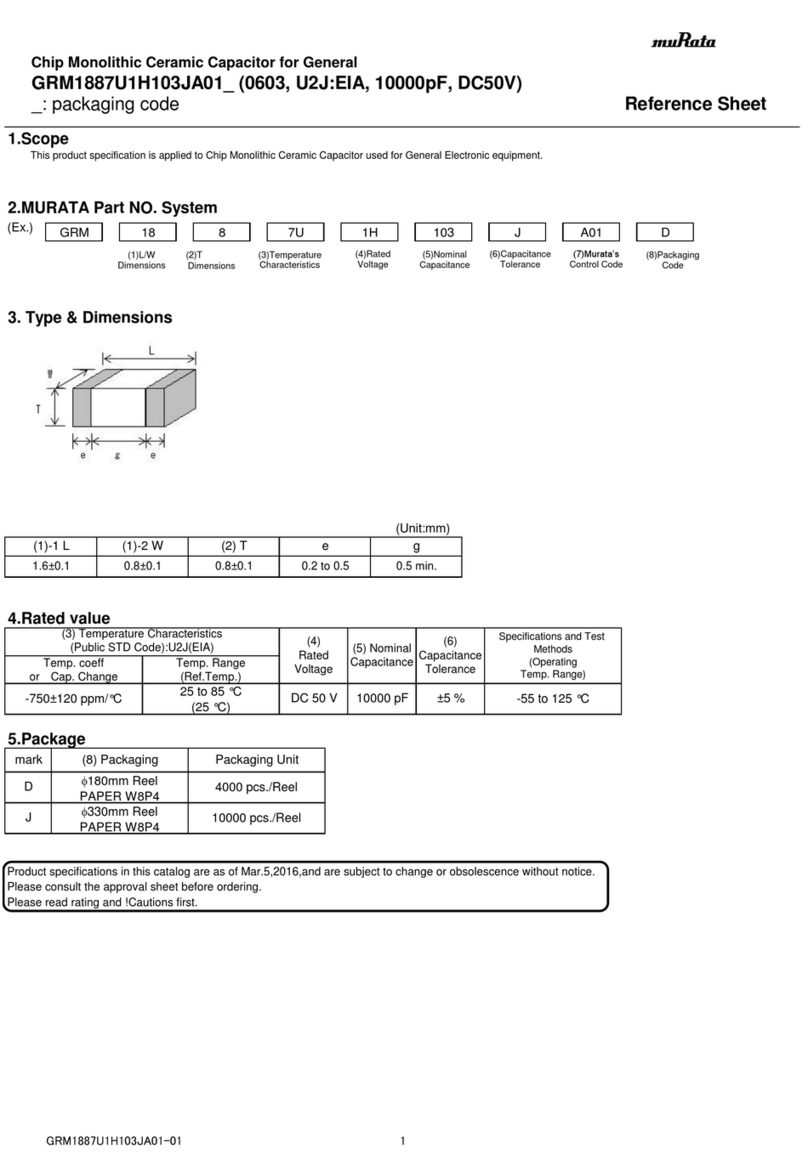
Murata
Murata GRM1887U1H103JA01 Series Reference sheet
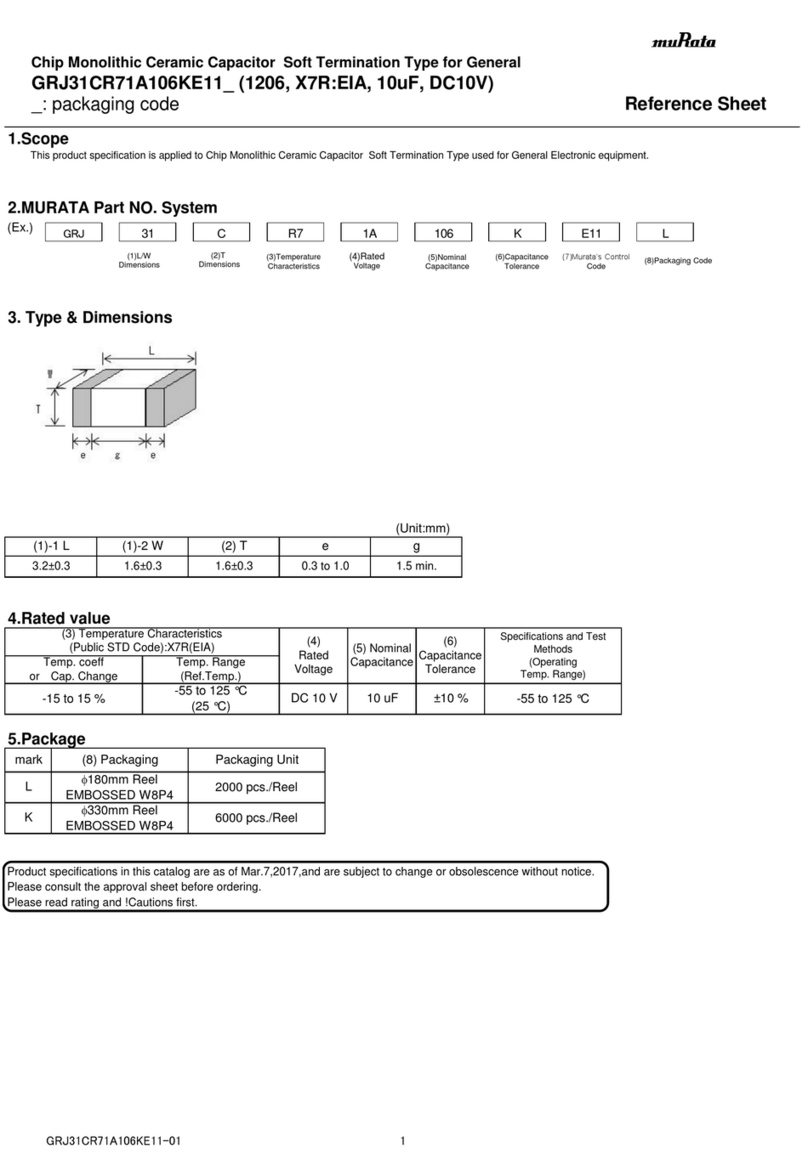
Murata
Murata GRJ31CR71A106KE11 Series Reference sheet
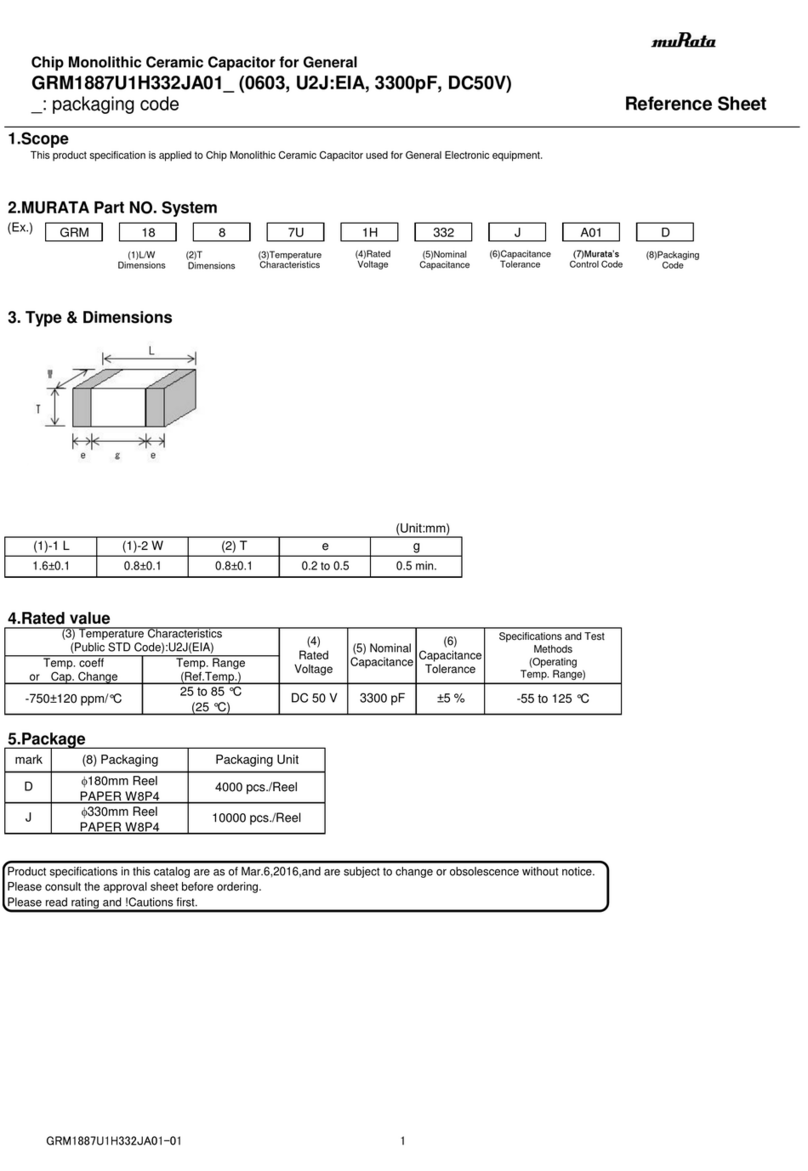
Murata
Murata GRM1887U1H332JA01 Series Reference sheet
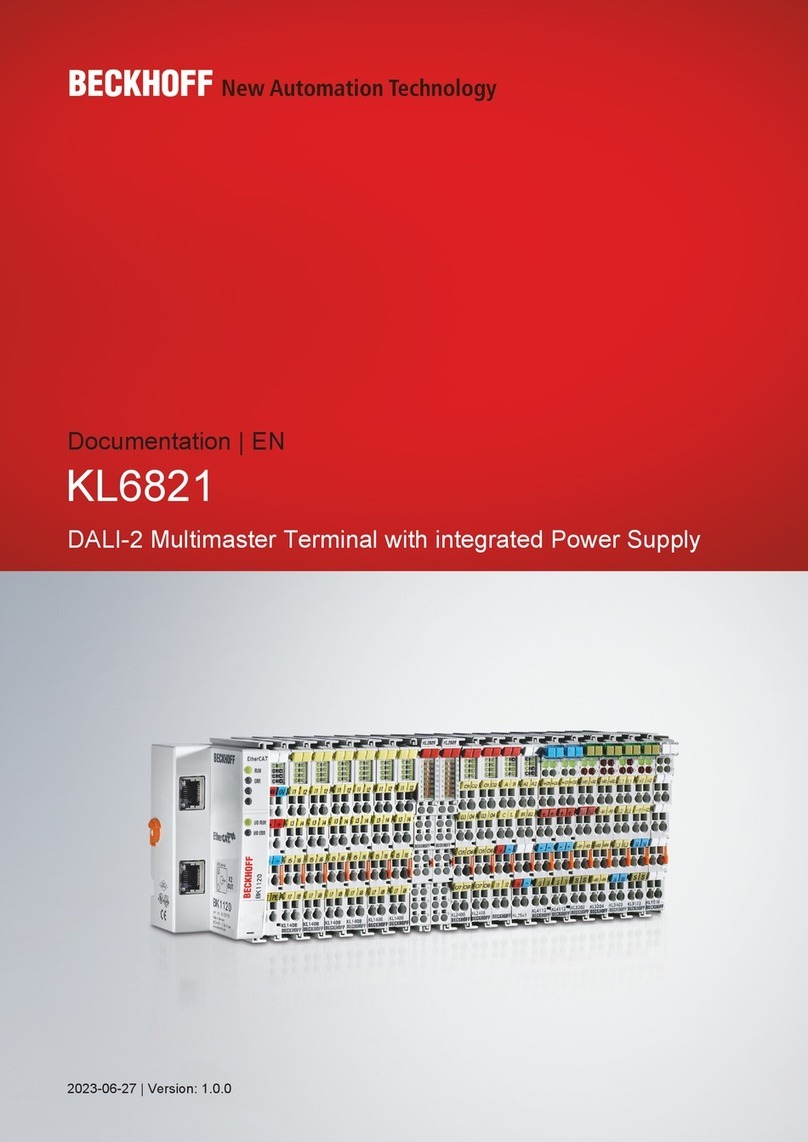
Beckhoff
Beckhoff KL6821 Documentation
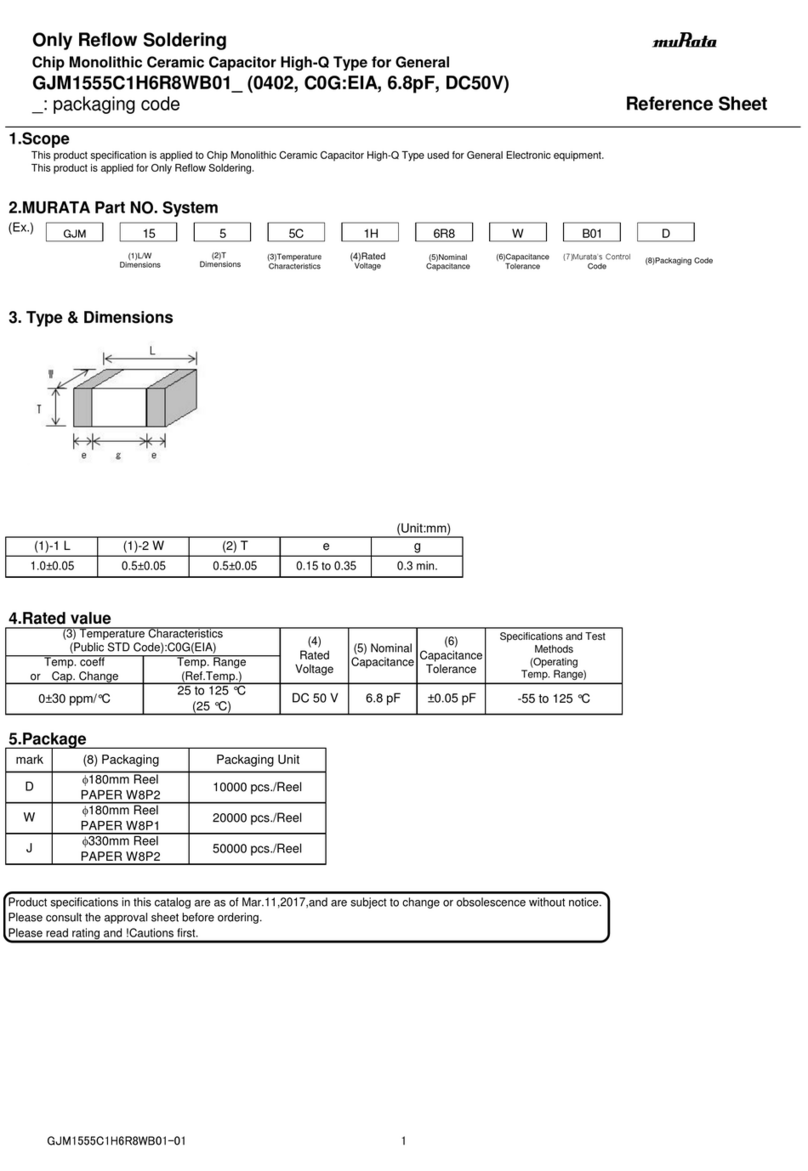
Murata
Murata GJM1555C1H6R8WB01 Series Reference sheet
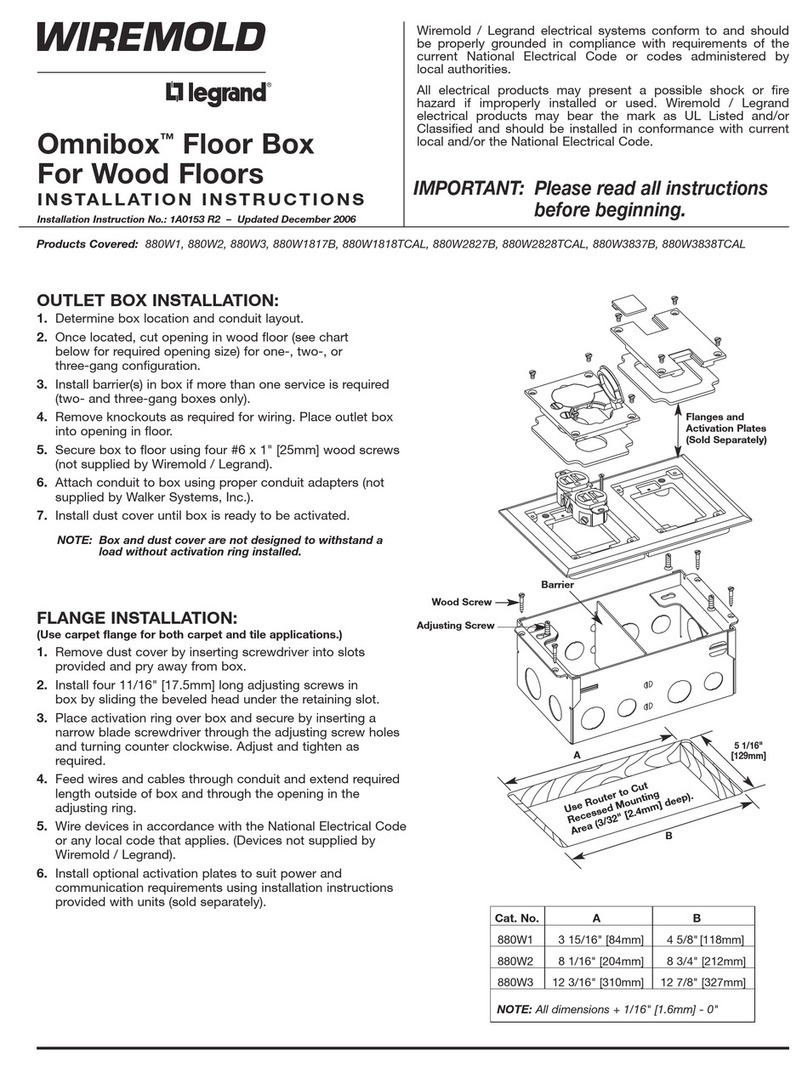
Wiremold
Wiremold Legrand Omnibox installation instructions
